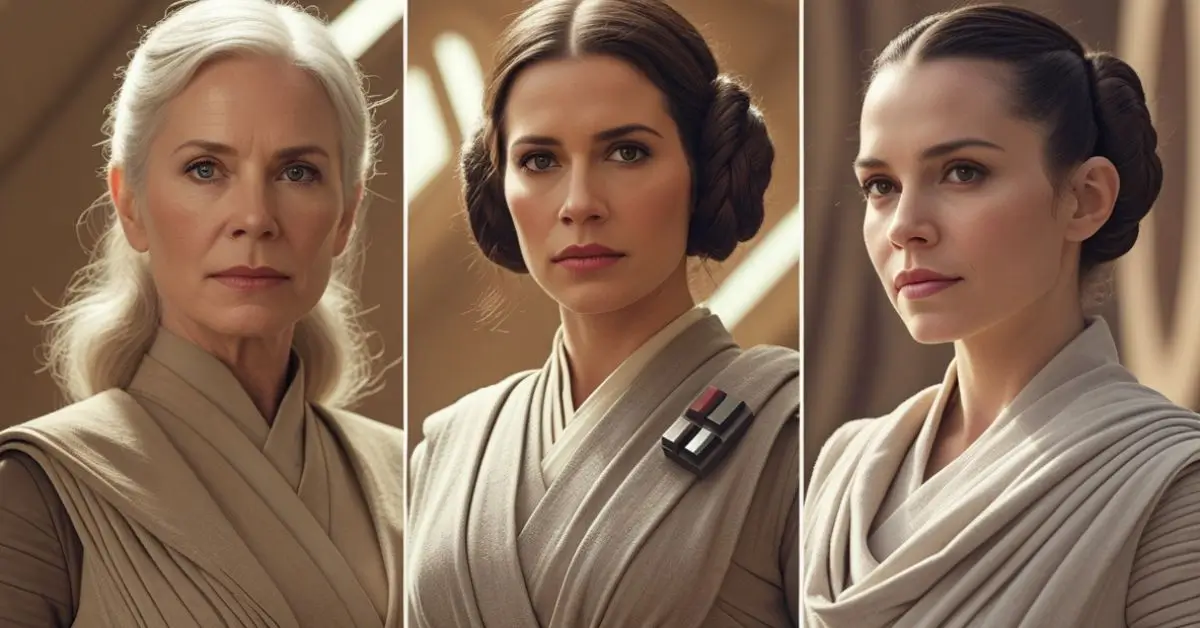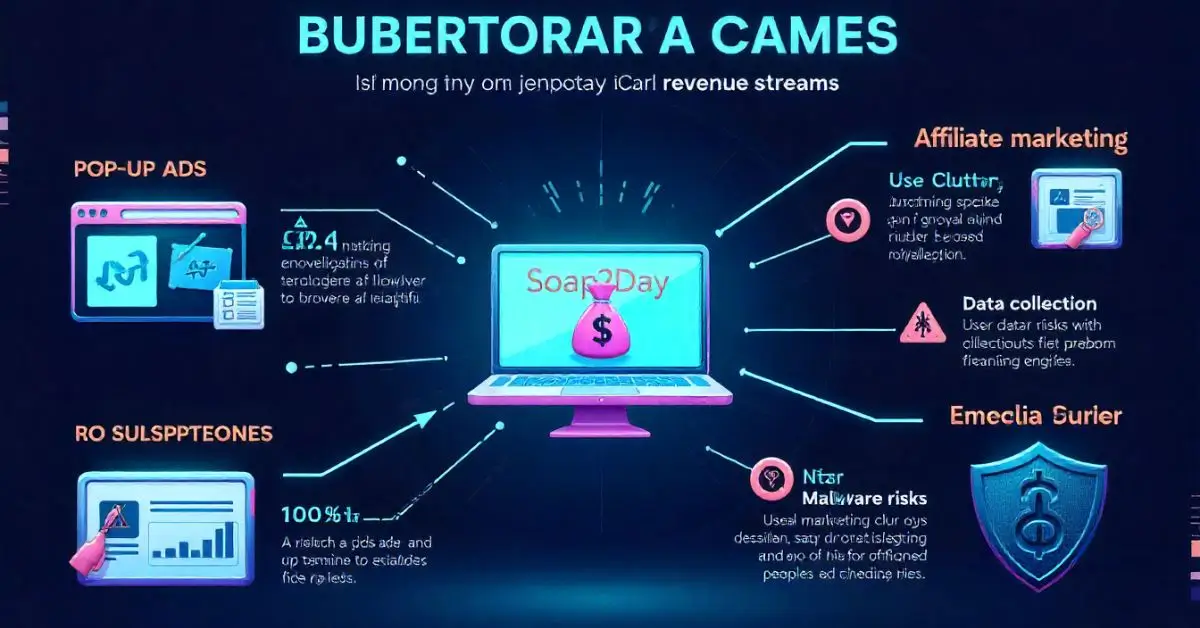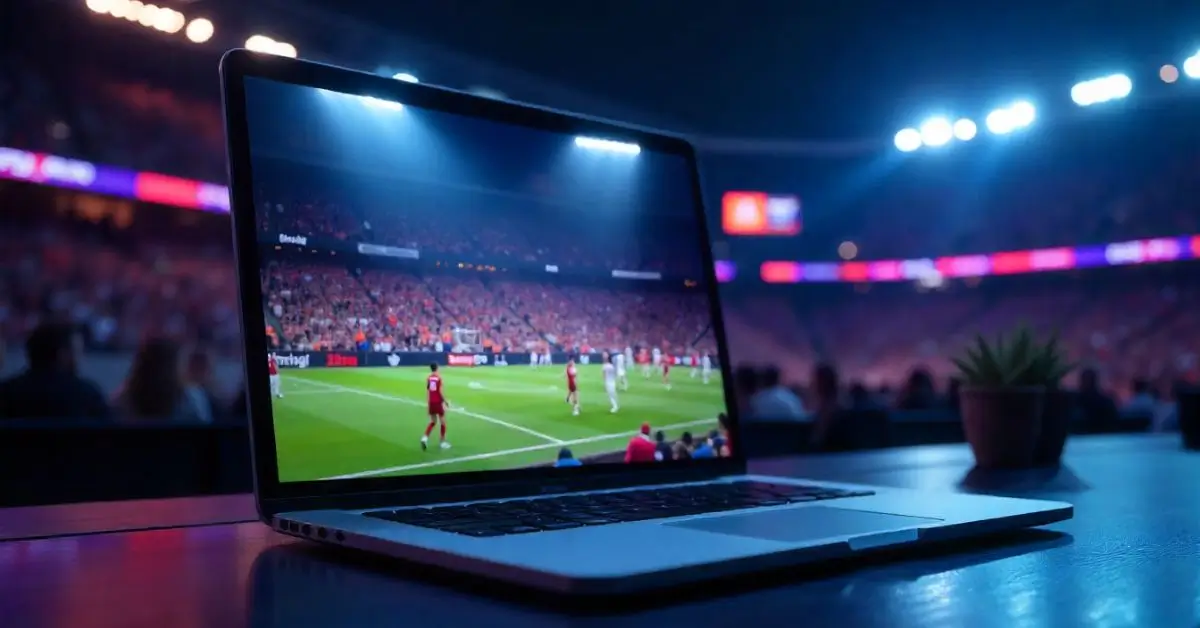ENTERTAINMENT
Female Star Wars Characters: A Legacy of Power, Courage, and Impact

From intergalactic senators to powerful Jedi warriors, female Star Wars characters have continually shaped the galaxy far, far away. These trailblazing women have not only redefined science fiction storytelling but also inspired generations of fans worldwide. Their roles range from political masterminds and battlefield generals to daring rebels and deeply nuanced villains. In this article, we’ll dive deep into the enduring legacy and evolution of female Star Wars characters—exploring their cultural influence, character arcs, and critical acclaim—while drawing comparisons and showcasing what makes each one distinct.
The Rise of Female Representation in Star Wars
The original trilogy introduced female Star Wars characters with Princess Leia, a royal diplomat and rebel with nerves of steel. She shattered traditional tropes by becoming a leading figure in the Rebel Alliance. Leia wasn’t just a damsel in distress—she was a leader, a fighter, and a symbol of hope.
Fast-forward to the prequels and sequels, and the universe expanded to include dynamic figures like Padmé Amidala, Rey Skywalker, Ahsoka Tano, and Jyn Erso. These heroines brought complexity, emotion, and strength, making female characters central to the Star Wars narrative, not just sidekicks.
Why Female Characters Matter in Sci-Fi Narratives
Science fiction often reflects society’s ideals and challenges. Female Star Wars characters represent inclusivity, empowerment, and evolution in a male-dominated genre. According to entertainment analysts, this shift is not accidental—it stems from audience demand for diverse, authentic, and multidimensional characters.
As female representation grows, it allows younger generations to envision themselves in roles of leadership, valor, and sacrifice. That’s the real power of these characters—they transcend fiction and influence real-world perceptions of gender roles.
Iconic Female Star Wars Characters and Their Contributions
Leia Organa
As a cornerstone of the original trilogy, Leia Organa is arguably one of the most recognizable female Star Wars characters. A fierce diplomat and general, Leia combines strategic brilliance with emotional intelligence. Her leadership steered the Rebel Alliance and later the Resistance.
“Somebody has to save our skins.” – Leia Organa
She’s proof that grace and grit can coexist in one powerful figure.
Padmé Amidala
The queen-turned-senator from Naboo, Padmé Amidala is a symbol of elegance and diplomacy. Unlike many, her power lies not in a lightsaber but in her principles and speeches. Amidala represents the voice of reason in a time of growing darkness, showing that influence doesn’t always require physical strength.
Ahsoka Tano
Originally introduced in The Clone Wars, Ahsoka Tano evolved from a young Padawan to a respected warrior who carved her own path. She chose morality over blind loyalty, even leaving the Jedi Order when it betrayed its values.
Her character appeals to fans for her growth, independence, and refusal to conform.
Rey Skywalker
Rey is the protagonist of the sequel trilogy and a character whose journey reflects inner struggle, self-discovery, and chosen identity. She starts as a scavenger and ends up being the last hope for the Jedi. Her arc reinvigorates the mythos, pushing it toward new dimensions.
Jyn Erso
Jyn’s sacrifice in Rogue One wasn’t just heroic—it was essential. Her bravery secured the Death Star plans, setting the events of A New Hope in motion. She stands as a representation of resistance and resilience.
Comparison Table of Prominent Female Star Wars Characters
| Character | Role in Series | Combat Skills | Leadership | Political Influence | Fan Popularity* |
|---|---|---|---|---|---|
| Leia Organa | Rebel Leader/General | Moderate | Excellent | High | 9.5/10 |
| Padmé Amidala | Queen/Senator | Low | High | Excellent | 8.0/10 |
| Ahsoka Tano | Jedi/Warrior | Exceptional | High | Low | 9.8/10 |
| Rey Skywalker | Jedi Protagonist | Exceptional | Moderate | Low | 8.9/10 |
| Jyn Erso | Rebel Operative | High | Moderate | Low | 8.5/10 |
*Fan popularity scores are general perceptions based on cultural impact and fan forums.
Evolution Through the Eras: From Leia to Rey
The progression of female Star Wars characters reveals an important shift: from symbolic leaders to fully realized protagonists. While Leia laid the groundwork, modern heroines like Rey and Ahsoka carry the legacy forward. These transitions mirror changing societal norms and the broader movement toward gender parity in film.
The new era focuses not just on heroism but on vulnerabilities, backstories, and choices. The Force is no longer a male-dominated domain—it’s a field for balance, regardless of gender.
Representation in Animation vs Live Action
Animated shows like The Clone Wars and Star Wars Rebels introduced audiences to a broader range of female Star Wars characters. Ahsoka, Hera Syndulla, and Sabine Wren are standout figures whose stories often rival or surpass their live-action counterparts in depth and development.
Animation allowed for greater narrative flexibility, making these characters more relatable and nuanced.
Strength Beyond the Lightsaber
Not all heroines wield sabers. Characters like Mon Mothma and Vice Admiral Holdo show strength in leadership and ideology. They may not engage in physical combat, but their influence shapes outcomes on a galactic scale.
This underscores an essential truth: female strength is not monolithic—it varies and adapts based on context, values, and circumstances.
Costume Design and Symbolism
Clothing in Star Wars is rarely just aesthetic. Leia’s white gown symbolized peace and purity; Amidala’s elaborate royal attire emphasized diplomacy and tradition. Rey’s rugged clothing reflected survival and grit.
Costume design subtly reinforces each character’s role, personality, and evolution, showcasing the depth of their storylines.
Diversity Among Female Characters
Star Wars has begun expanding beyond Eurocentric narratives, with characters like Rose Tico, Fennec Shand, and Reva Sevander. These diverse female Star Wars characters reflect the galaxy’s complexity and widen the scope for cultural identification.
This diversity not only adds richness but also aligns with modern calls for inclusive storytelling.
Impact on Pop Culture and Fandom
From cosplay to conventions, female Star Wars characters have dominated fan culture. Leia’s buns, Rey’s staff, and Ahsoka’s dual sabers are symbols of empowerment.
They influence art, literature, video games, and merchandising. More importantly, they inspire real-world confidence, especially among young fans looking for heroes that reflect their own identity.
Criticism and Backlash: A Sign of Progress?
With increased visibility comes criticism—especially for leads like Rey and Rose. However, backlash often signals disruption of outdated norms. These strong female leads challenge the status quo, proving that representation often ignites debate before acceptance.
The franchise’s willingness to weather criticism speaks volumes about its commitment to growth.
Future of Female Characters in Star Wars
Upcoming projects like The Acolyte, Ahsoka, and Skeleton Crew promise deeper exploration of female-led narratives. These stories will likely push boundaries, blending action, mythology, and emotional depth.
Expect new faces, fresh arcs, and transformative journeys as the galaxy continues evolving.
Conclusion: The Galactic Influence of Female Star Wars Characters
Female Star Wars characters have transcended their fictional universe to become real-world icons of strength, intellect, and change. From Leia’s revolutionary leadership to Rey’s self-discovery and Ahsoka’s moral fortitude, these women carry the torch of galactic progress.
They’re more than characters—they’re symbols. Their legacy continues to grow, challenging norms and shaping futures, both on-screen and off.
FAQs
What makes female Star Wars characters so important?
Female Star Wars characters represent balance, inclusivity, and depth in a genre traditionally dominated by male heroes. They inspire by breaking norms and evolving with the times.
Who is the strongest female Star Wars character?
Ahsoka Tano is often regarded as one of the strongest due to her combat skills, independence, and moral clarity, even surpassing some Jedi Masters in strategy and force control.
Are there any female Sith characters in Star Wars?
Yes, characters like Asajj Ventress and the Inquisitor Reva Sevander showcase the darker side of Force-sensitive women, adding complexity to female roles in the franchise.
Which female Star Wars character had the most political influence?
Padmé Amidala arguably had the most influence politically. As Queen and later a Senator, she shaped galactic debates and tried to preserve democracy against the rising Empire.
What are some animated female characters in Star Wars?
Popular animated female characters include Ahsoka Tano (The Clone Wars), Hera Syndulla (Rebels), and Sabine Wren (Rebels), each known for courage and depth.
Is the Star Wars universe becoming more inclusive?
Yes, recent films and shows are emphasizing diversity in casting and storylines, bringing more culturally rich female characters into the spotlight.
ENTERTAINMENT
How Does Soap2Day Make Money? A Deep Dive Into Its Revenue Model

Soap2Day, a popular free streaming platform, has garnered attention for offering movies and TV shows without subscription fees. But how does Soap2Day make money if users aren’t paying to access content? The answer lies in a combination of advertising, affiliate partnerships, and other monetization strategies that keep the platform running while providing free entertainment.
Understanding Soap2Day’s Business Model
Unlike legitimate streaming services such as Netflix or Hulu, Soap2Day operates in a legal gray area by hosting copyrighted content without proper licensing. This raises ethical and legal concerns, but it also explains why the platform relies on alternative revenue streams rather than subscriptions.
Primary Revenue Streams of Soap2Day
Soap2Day’s ability to stay online depends on several monetization tactics:
-
Advertising Revenue
-
Affiliate Marketing
-
Data Collection & User Analytics
-
Donations & Voluntary Contributions
-
Malware & Redirect Risks
Each of these methods plays a role in how Soap2Day makes money, though some are more controversial than others.
1. Advertising: The Core of Soap2Day’s Earnings
Advertising is the backbone of Soap2Day’s revenue model. The platform displays multiple types of ads, including:
-
Pop-up and Redirect Ads – These force users to new tabs, often promoting dubious products.
-
Video Ads – Pre-roll or mid-roll ads that play before or during streams.
-
Banner Ads – Static or animated ads placed around the video player.
Since Soap2Day doesn’t charge users, advertisers pay to reach its large audience. However, many of these ads are intrusive and may lead to malicious websites, raising security concerns.
2. Affiliate Marketing: Earning Through Referrals
Another way Soap2Day makes money is through affiliate partnerships. The platform may include links to third-party services (VPNs, movie merchandise, or other streaming sites) and earn commissions when users click or make purchases.
While this is a common monetization strategy, the lack of transparency about these partnerships can mislead users into engaging with untrustworthy vendors.
3. Data Collection & User Analytics
Free streaming sites often collect user data, including:
-
IP addresses
-
Browsing habits
-
Device information
This data can be sold to third-party advertisers or used to target ads more effectively. While not unique to Soap2Day, this practice raises privacy concerns, especially since the site lacks clear data protection policies.
4. Donations & Voluntary Contributions
Some users voluntarily donate to support the platform, believing they’re helping maintain free access to content. However, these contributions are often minimal compared to advertising revenue.
5. Malware & Redirect Risks: The Dark Side of Free Streaming
One of the biggest criticisms of Soap2Day is its association with malware. Many ads on the site lead to phishing scams or unwanted software downloads. While not a direct revenue stream, these risks highlight the trade-off between free content and user security.
Comparison: Soap2Day vs. Legitimate Streaming Services
To better understand how Soap2Day makes money compared to legal platforms, let’s examine key differences:
| Feature | Soap2Day | Legitimate Services (e.g., Netflix) |
|---|---|---|
| Cost | Free | Subscription-based |
| Revenue Model | Ads, Affiliates | Subscriptions, Licensing |
| Content Legality | Unlicensed | Fully Licensed |
| User Safety | High Risk | Secure & Regulated |
| Ad Experience | Intrusive Ads | Minimal or No Ads |
This comparison shows why Soap2Day can offer free content—its monetization comes at the expense of user experience and security.
Ethical & Legal Concerns Surrounding Soap2Day
While Soap2Day’s revenue model is effective, it operates in violation of copyright laws. Major studios and anti-piracy organizations actively work to shut down such sites, meaning users risk:
-
Legal repercussions for accessing pirated content.
-
Exposure to malware and scams.
-
Unreliable service due to frequent domain changes.
How Users Can Stay Safe
If you choose to use free streaming sites, consider these precautions:
-
Use a reputable ad-blocker to minimize malicious ads.
-
Avoid entering personal information.
-
Consider legal alternatives to support content creators.
Conclusion
Soap2Day makes money primarily through aggressive advertising, affiliate marketing, and data collection—methods that prioritize profit over user safety. While the platform offers free access to movies and TV shows, the risks often outweigh the benefits. Understanding how Soap2Day sustains itself helps users make informed decisions about their streaming habits.
FAQs
Is Soap2Day legal?
Soap2Day operates illegally by hosting unlicensed content. Users accessing such sites may face legal consequences depending on local copyright laws.
Does Soap2Day have viruses?
Due to intrusive ads and redirects, Soap2Day is known to expose users to malware and phishing scams.
Why does Soap2Day have so many ads?
Ads are the primary way Soap2Day makes money since it doesn’t charge subscription fees.
Can I get in trouble for using Soap2Day?
While individual users are rarely prosecuted, accessing pirated content is illegal in many countries.
Are there safer alternatives to Soap2Day?
Yes, legal streaming platforms like Netflix, Hulu, and Disney+ offer secure, licensed content.
How long will Soap2Day stay online?
Piracy sites frequently face shutdowns, so Soap2Day’s availability is unpredictable.
ENTERTAINMENT
Crackstreams MLB: Your Ultimate Guide to Free Baseball Streams

Crackstreams MLB has become a popular search term among baseball fans looking for free, high-quality streams of Major League Baseball games. With the rising costs of cable subscriptions and streaming services, many fans turn to alternative platforms to catch their favorite teams in action. However, while Crackstreams MLB offers convenience, it’s essential to understand the risks, benefits, and legal alternatives available. This guide explores everything you need to know about Crackstreams MLB, from its functionality to safer viewing options.
What Is Crackstreams MLB?
Crackstreams MLB is an unofficial streaming platform that provides live broadcasts of MLB games without requiring a paid subscription. Unlike official services like MLB.TV or ESPN+, Crackstreams operates in a legal gray area, offering free access to games that would otherwise require a subscription. While this may seem appealing, users should be aware of potential drawbacks, including unreliable streams, pop-up ads, and legal concerns.
How Does Crackstreams MLB Work?
Crackstreams MLB aggregates live streams from various sources, allowing users to watch games in real time. The platform typically lists ongoing and upcoming MLB matches, making it easy for fans to find their desired games. However, because these streams are unauthorized, they often lack the stability and quality of licensed services. Users may encounter buffering issues, sudden disconnections, or even malicious ads that could compromise device security.
Pros and Cons of Using Crackstreams MLB
Before relying on Crackstreams MLB for your baseball fix, consider the advantages and disadvantages:
Pros:
✔ Free Access – No subscription fees or paywalls.
✔ Wide Game Selection – Covers most MLB games, including playoffs.
✔ No Regional Restrictions – Bypasses blackout rules that affect official services.
Cons:
✖ Legal Risks – Unauthorized streaming may violate copyright laws.
✖ Poor Stream Quality – Frequent lag, low resolution, and sudden drops.
✖ Security Concerns – Malware and phishing risks from intrusive ads.
Legal Alternatives to Crackstreams MLB
If you want to enjoy MLB games without the risks associated with Crackstreams MLB, consider these legitimate alternatives:
-
MLB.TV – The official streaming service with HD quality and no blackouts (for out-of-market games).
-
ESPN+ – Offers select MLB games along with other sports content.
-
YouTube TV / Hulu + Live TV – Includes regional sports networks for local game coverage.
-
FuboTV – A sports-centric streaming service with multiple MLB broadcast channels.
While these options require a subscription, they provide reliable streams, enhanced features (like DVR), and legal peace of mind.
Comparison: Crackstreams MLB vs. Legal Streaming Services
To help you decide the best way to watch MLB games, here’s a comparison of five key features:
| Feature | Crackstreams MLB | MLB.TV | ESPN+ | YouTube TV | FuboTV |
|---|---|---|---|---|---|
| Cost | Free | Paid | Paid | Paid | Paid |
| Stream Quality | Unreliable | HD | HD | HD | HD |
| Legal Status | Unauthorized | Legal | Legal | Legal | Legal |
| Blackout Restrictions | None | Yes | Yes | Yes | Yes |
| Additional Features | None | DVR, Multi-View | Live Sports Analysis | Cloud DVR | Sports Add-ons |
As seen in the table, legal services offer better reliability and features, while Crackstreams MLB remains a risky, albeit free, alternative.
Staying Safe While Streaming MLB Games Online
If you still choose to use Crackstreams MLB, follow these safety tips:
-
Use a VPN – Protects your identity and bypasses ISP tracking.
-
Install Ad Blockers – Reduces exposure to malicious pop-ups.
-
Avoid Downloading Files – Some streams may prompt downloads containing malware.
-
Keep Antivirus Updated – Prevents potential security breaches.
While free streams can be tempting, the risks often outweigh the benefits. Investing in a legitimate service ensures a seamless and secure viewing experience.
Why Fans Seek Out Crackstreams MLB
The demand for Crackstreams MLB stems from several factors:
-
High Costs of Cable & Streaming Subscriptions – Many fans can’t justify multiple paid services.
-
Regional Blackouts – MLB.TV restricts local games, pushing fans toward unofficial streams.
-
Instant Access – No sign-ups or payment barriers make free streams appealing.
However, supporting official broadcasters helps sustain the sport and ensures better production quality.
The Future of MLB Streaming
As streaming technology evolves, MLB may adopt more fan-friendly policies, such as reducing blackout restrictions or offering cheaper subscription tiers. Until then, fans must weigh the pros and cons of platforms like Crackstreams MLB versus licensed alternatives.
Final Thoughts on Crackstreams MLB
Crackstreams MLB provides a quick solution for fans wanting free access to baseball games, but it comes with significant downsides. From legal concerns to inconsistent quality, relying on unofficial streams can be frustrating. For the best experience, consider legal alternatives that offer reliability, security, and superior features.
FAQs
Is Crackstreams MLB Legal?
No, Crackstreams MLB operates without broadcasting rights, making it an unauthorized platform. Using such services may violate copyright laws, though enforcement typically targets distributors rather than viewers.
Does Crackstreams MLB Work on Mobile Devices?
Yes, but the streams may not be optimized for mobile, leading to playback issues. Additionally, intrusive ads can make mobile browsing risky.
Can I Get Banned for Using Crackstreams MLB?
While users are rarely banned, ISPs may throttle bandwidth or issue warnings if illegal streaming is detected. A VPN can help mitigate this risk.
Are There Free Legal Alternatives to Crackstreams MLB?
Some platforms offer free trials (e.g., MLB.TV’s yearly preview), but most require a subscription. Local broadcasts via antenna may also provide free access to select games.
Why Does Crackstreams MLB Have So Many Ads?
Since the platform doesn’t charge users, it relies on ad revenue. Unfortunately, many ads are malicious or misleading.
How Can I Watch MLB Games Without Cable?
Legal streaming services like MLB.TV, ESPN+, and Hulu + Live TV offer comprehensive coverage without requiring a traditional cable subscription.
ENTERTAINMENT
StreamEast Domains: Your Ultimate Guide to Seamless Streaming

StreamEast domains have become a popular topic among sports fans and streaming enthusiasts looking for reliable ways to watch live events. Whether you’re searching for free sports streams or exploring alternatives to paid services, understanding how StreamEast domains work can help you make informed decisions. This guide covers everything you need to know—features, risks, comparisons, and best practices—to ensure a smooth streaming experience.
What Are StreamEast Domains?
StreamEast domains are web addresses that host live sports streams, offering access to events like NFL, NBA, MLB, and soccer matches. These domains frequently change due to legal pressures, making it essential for users to stay updated on active links. While they provide free access to premium content, users should be aware of potential risks, including malware and unreliable streams.
How StreamEast Domains Work
StreamEast domains operate by aggregating live sports feeds from various sources. They don’t host the content directly but act as intermediaries, redirecting users to streams hosted elsewhere. This setup allows them to evade shutdowns temporarily, but it also means streams can be unstable or disappear without warning.
Key Features of StreamEast Domains
-
Free Access: No subscription fees, making them attractive for budget-conscious viewers.
-
Wide Sports Coverage: Includes football, basketball, hockey, and more.
-
User-Friendly Interface: Simple layouts with minimal ads (though some domains may have intrusive pop-ups).
-
Frequent Domain Changes: New URLs emerge when old ones get taken down.
Risks and Challenges of Using StreamEast Domains
While StreamEast domains offer convenience, they come with significant drawbacks:
1. Legal Concerns
Unauthorized streaming violates copyright laws in many regions. Users may face warnings or legal action from ISPs, though penalties are rare for viewers.
2. Security Risks
Free streaming sites often contain malware, phishing scams, or intrusive ads. Using a reliable ad-blocker and VPN can mitigate these threats.
3. Unreliable Stream Quality
Buffering, sudden disconnections, and low-resolution streams are common issues due to high traffic and unstable sources.
StreamEast Domains vs. Legal Streaming Services: A Comparison
To help you decide whether StreamEast domains are worth the risk, here’s a comparison with paid streaming platforms:
| Feature | StreamEast Domains | Legal Streaming Services |
|---|---|---|
| Cost | Free | Subscription-based |
| Stream Quality | Unreliable | HD/4K, stable |
| Legal Safety | Risky | Fully compliant |
| Content Variety | Limited | Extensive (leagues, on-demand) |
| User Experience | Ad-heavy | Clean, ad-free (or minimal) |
Legal services provide better reliability and security, but StreamEast domains remain appealing due to their zero-cost model.
How to Safely Access StreamEast Domains (If You Choose To)
If you decide to use StreamEast domains, follow these precautions:
1. Use a VPN
A VPN hides your IP address, protecting your privacy and bypassing regional restrictions.
2. Install an Ad-Blocker
Reduce exposure to malicious ads and pop-ups with a trusted ad-blocking extension.
3. Verify the Domain
Stick to community-recommended sources to avoid fake or harmful sites.
4. Avoid Downloading Files
Never download “stream plugins” or other files, as they may contain malware.
Alternatives to StreamEast Domains
If the risks outweigh the benefits, consider these legal alternatives:
-
Official League Apps (NFL, NBA, etc.) – Some offer free highlights and limited live games.
-
Free Trials of Paid Services – Platforms often provide trial periods for new users.
-
Network-Supported Streams – Some broadcasters stream games for free on their websites.
Final Thoughts:
StreamEast domains provide a tempting solution for free sports streaming, but they come with legal and security risks. While they cater to users unwilling to pay for subscriptions, the trade-offs in quality and safety are significant. If you choose to use them, take precautions like using a VPN and ad-blocker. For a seamless, legal experience, exploring official streaming services may be a better long-term solution.
FAQs
Is StreamEast Legal?
StreamEast domains operate in a legal gray area. While accessing streams isn’t typically prosecuted, distributing or hosting copyrighted content is illegal.
Why Do StreamEast Domains Keep Changing?
They frequently get shut down due to copyright violations, forcing operators to create new domains.
Can I Get a Virus from StreamEast?
Yes, malicious ads and fake download buttons can infect your device. Use security tools to minimize risks.
Do I Need a VPN for StreamEast?
A VPN isn’t mandatory but strongly recommended to protect your privacy and avoid ISP tracking.
Are There Any Free Legal Alternatives?
Some leagues and networks offer free streams for select games, but full access usually requires a subscription.
How Can I Find the Latest StreamEast Domains?
Online forums and communities often share updated links, but be cautious of scams.
-

 GENERAL4 months ago
GENERAL4 months agoDoge 5000 Check: What It Is and Why It Matters
-

 ENTERTAINMENT5 months ago
ENTERTAINMENT5 months agoVirginia Tech Football News: Latest Updates, Key Insights, and Future Outlook
-

 TECHNOLOGY5 months ago
TECHNOLOGY5 months agoBroadviewNet: The Ultimate Solution for Reliable and Scalable Connectivity
-

 TECHNOLOGY6 months ago
TECHNOLOGY6 months agoSlimyim Regretevator: A Game-Changer in Adaptive Feedback Loops
-

 GENERAL4 months ago
GENERAL4 months agoCoomer Party: The Ultimate Guide to Understanding the Trend
-

 GENERAL5 months ago
GENERAL5 months agoAnne Dias: A Trailblazer in Finance and Philanthropy
-

 TECHNOLOGY4 months ago
TECHNOLOGY4 months agoHow a Med Tech Certificate Can Launch Your Career
-

 TECHNOLOGY6 months ago
TECHNOLOGY6 months agoBit Browser: The Future of Web Browsing Experience
